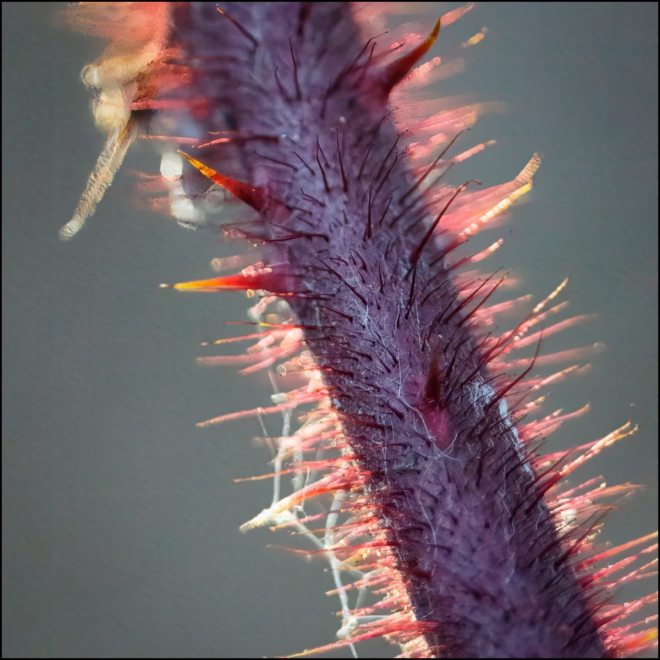What’s a “Rubus” you may ask? Well, my initial inclination was to call it a “Bramble”, but it seems this might have been incorrect. According to Wikipedia:
Rubus is a large and diverse genus of flowering plants in the rose family, Rosaceae, subfamily Rosoideae, with over 1,350 species, commonly known as brambles.
Raspberries, blackberries, and dewberries are common, widely distributed members of the genus, and bristleberries are endemic to North America. Most of these plants have woody stems with prickles like roses; spines, bristles, and gland-tipped hairs are also common in the genus. The Rubus fruit, sometimes called a bramble fruit, is an aggregate of drupelets. The term “cane fruit” or “cane berry” applies to any Rubus species or hybrid which is commonly grown with supports such as wires or canes, including raspberries, blackberries, and hybrids such as loganberry, boysenberry, marionberry and tayberry. The stems of such plants are also referred to as canes.
Bramble bushes typically grow as shrubs (though a few are herbaceous), with their stems being typically covered in sharp prickles. They grow long, arching shoots that readily root upon contact with soil, and form a soil rootstock from which new shoots grow in the spring. The leaves are either evergreen or deciduous, and simple, lobed, or compound. The shoots typically do not flower or set fruit until the second year of growth (i.e. they are biennial). The rootstock is perennial. Most species are hermaphrodites with male and female parts being present on the same flower. Bramble fruits are aggregate fruits formed from smaller units called drupelets.
Around 60-70% of species of Rubus are polyploid (having more than two pairs of each chromosome), with species ranging in ploidy from diploid (2x, with 14 chromosomes) to tetradecaploid (14x).
So, it seems that I wasn’t entirely wrong. I merely underestimated the complexity of the species. You’ve got to love that last sentence. I particularly liked: “…with species ranging in ploidy from diploid..to tetradecaploid”. Clearly, this article was not written for the uninitiated reader.
I just liked that way that the sinking sun was backlighting the thing.
Taken with a Sony A6000 and Venus Optics Laowa 85mm f5.6

